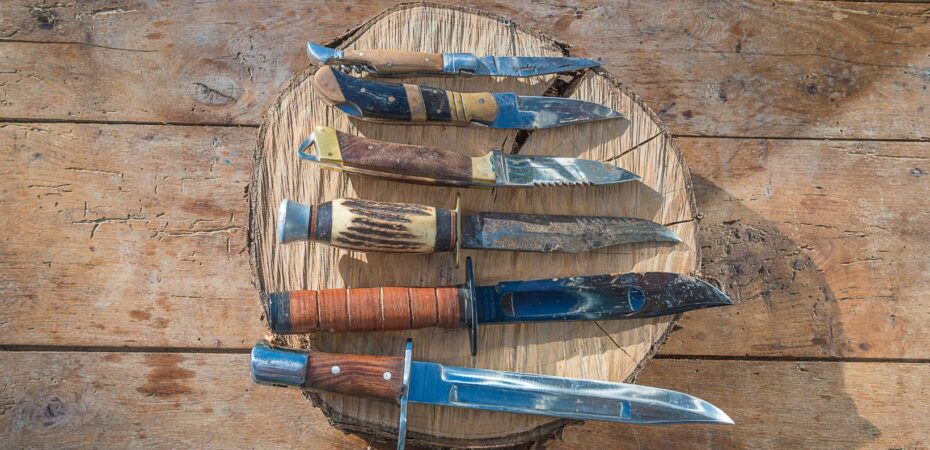In the realm of hunting, the expertise of the hunter is significantly complemented by the quality of their gear, especially the hunting knife, which is paramount for tasks such as field dressing, skinning, or various outdoor activities. This indispensable tool ensures the hunter’s safety and dramatically enhances the gear’s longevity and efficiency when maintained and handled with care.
Through this detailed article, we aim to explore the intricacies of hunting knives and highlight the critical importance of proper care and handling, especially of fixed blade hunting knives. Adhering to these guidelines will not only safeguard the user but also ensure that this essential piece of equipment performs optimally over time, thereby enriching the hunting experience.
Significance of Hunting Knives
Hunting knives hold a pivotal role in the toolkit of any outdoorsman or hunter. These knives are not merely tools but companions in the wilderness, ensuring survival and efficiency. The design of hunting knives is based on centuries of evolution, tailored to meet the specific needs of dressing game, cutting through brush, and other outdoor tasks. The significance of hunting knives goes beyond their practical utility. They are symbols of self-reliance and the deep connection between humans and nature.
A well-crafted hunting knife can distinguish between a successful hunt and a struggle for survival. It enables hunters to efficiently process the game in the field, ensuring that respect for the animal is maintained through a tool designed for clean and humane cuts. Furthermore, hunting knives are often passed down through generations as heirlooms, carrying stories and traditions that strengthen familial bonds and hunting heritage.
They embody the spirit of adventure, respect for wildlife, and skills honed over generations of hunters. In essence, hunting knives are not just tools; they are an integral part of the hunting tradition, reflecting the skill, respect, and connection to the natural world that define hunting.
Choosing the Right Hunting Knife
Before delving into the handling and care aspects, let’s first touch on choosing the right knife. When selecting a hunting knife, there are several factors to consider:
1. Blade type: The blade type will depend on your specific needs. Fixed blades are sturdy and reliable while folding knives offer additional portability.
2. Blade material: Different blade materials have their advantages and disadvantages. Stainless steel offers corrosion resistance but may require more frequent sharpening compared to carbon steel.
3. Handle material: The handle material affects grip and durability. Standard options include wood, synthetic materials like G-10 or Micarta, and rubberized grips for added traction in wet conditions.
Proper Handling Techniques
Now that you have selected the perfect hunting knife for your needs let’s discuss essential handling techniques:

1. Hold the knife securely: Always maintain a firm grip on your knife to prevent accidents caused by slippage. Make sure your fingers are comfortably wrapped around the handle without impeding your cutting motion.
2. Keep fingers away from the blade: When using a knife, be mindful of keeping your fingers away from sharp areas such as the cutting edge or pointed tip to minimize the risk of accidental cuts.
3. Use controlled cutting motions: Apply steady pressure when using your hunting knife in order to confidently control its trajectory during each cut or slicing motion you make.
Cleaning and Maintenance
After a productive hunting trip, it is essential to clean and maintain your knife properly:
1. Clean the blade after each use: Rinse your knife under running lukewarm water to remove any debris or blood residue. Use a gentle soap solution or mild detergent before drying it thoroughly with a clean cloth.
2. Oil the blade regularly: To prevent corrosion, apply a thin layer of oil to the blade and moving parts (if applicable_. Be sure to select an appropriate lubricant that will not attract dust or gunk.
3. Sharpen the blade when necessary: A dull hunting knife limits its effectiveness and poses safety hazards. Regularly sharpen the blade using either whetstones or sharpening kits designed specifically for hunting knives.
Storage Considerations
Proper storage is crucial for maintaining the lifespan of your hunting knife. Here are some key considerations:

1. Keep your knife dry: Store it in a cool, dry place, preferably in a specialized sheath or case to prevent rust and damage.
2. Store with sheath: When not in use, keep your knife in its sheath or holster to protect both you and the blade from accidental contact.
3. Ventilate long-term storage: If storing for extended periods, ensure proper ventilation within closed containers to prevent humidity build-up that may damage the blade’s finish.
Conclusion
Hunting knives are indispensable tools that require proper handling and care for optimal performance and longevity. By following these simple guidelines—from selecting the right knife to practicing proper handling techniques, regular cleaning and maintenance, and considering suitable storage options—hunters can guarantee both their safety and their investment’s worth.
Remember, maintaining safety should always be the primary focus while ensuring that your hunting knives remain sharp, reliable companions on every outing into nature. Happy hunting!


 By
By 





